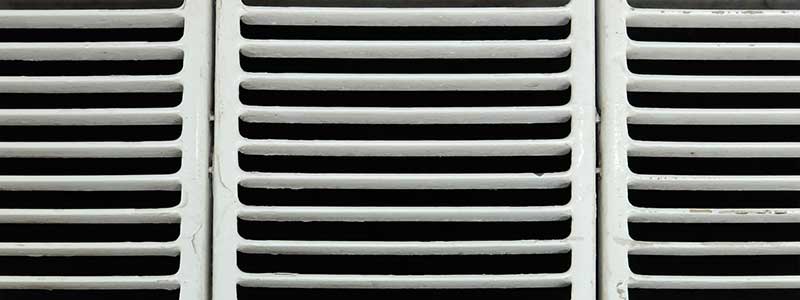Ensuring That Your Home is Thermally Efficient While Preventing Damp
 When approaching a programme of home insulation, the role of ventilation can often be overlooked. Often it will be thought that the only aim of insulation is to keep warm air from escaping. Therefore, the idea of adequately ventilating a space, which may allow cold air from outside to get in, would negate the good work of the insulation. However, this attitude could lead to major problems within the home such as damp or condensation and additional associated issues. The fact is that if insulation work is conducted without any thought for building ventilation requirements it is entirely possible that damp could begin to form under floorboards or in the loft space (in areas where you would not readily check). Also when a home is being heated via the central heating system, the windows/doors will usually be kept closed to retain the heat. However, this will reduce the flow of air and cause the moisture content in the air to increase and potentially form condensation. Therefore, it is vitally important for a building to be well ventilated.
When approaching a programme of home insulation, the role of ventilation can often be overlooked. Often it will be thought that the only aim of insulation is to keep warm air from escaping. Therefore, the idea of adequately ventilating a space, which may allow cold air from outside to get in, would negate the good work of the insulation. However, this attitude could lead to major problems within the home such as damp or condensation and additional associated issues. The fact is that if insulation work is conducted without any thought for building ventilation requirements it is entirely possible that damp could begin to form under floorboards or in the loft space (in areas where you would not readily check). Also when a home is being heated via the central heating system, the windows/doors will usually be kept closed to retain the heat. However, this will reduce the flow of air and cause the moisture content in the air to increase and potentially form condensation. Therefore, it is vitally important for a building to be well ventilated.
Less ventilation in modern homes?
Historically, many homes were built with open fires and this allowed for fresh air to be drawn through any natural openings in the structure of the house, therefore, creating a regular circulation of fresh air. Many new homes do not have open fires, moreover there are fewer natural openings in the structure of the home for air to get in, the levels of insulation are far greater and most houses also have a central heating system in place. All of these factors lead to a potential lessening of home ventilation.
Ventilating floors and walls
It is very important that the space below suspended wooded floors is ventilated properly otherwise there is a distinct possibility that dry rot could break out. Your home should have a series of airbricks built into exterior walls (ideally with a spacing of 2 metres between each airbrick). These will help to circulate air underneath the floor and work towards preventing dry rot occurring.
It is important that you periodically check the airbricks in the walls to make sure that the holes have not become blocked with leaves or other items, which would stop air from passing through them.
Ventilating blocked fireplaces
If your house currently has an older style fireplace that that been blocked off, you will want to ensure that it is still providing ventilation. To do so you can cut a hole in the masonry and fit a vent that will allow warm moisture laden air to carry from the room, through the vent, and up and out of the chimney, which will help to prevent condensation. The task can be achieved by cutting a hole in the brickwork that is blocking the fireplace and fitting a face mounted vent, or alternatively by cutting an airbrick into the flue from outside. These methods pre-determine that the chimney is uncapped of course.
Ventilating the roof
Ventilating the roof space is an important and mandatory requirement for new build homes. Currently the building regulations on roof ventilation dictate that there needs to be continuous openings of 10mm along each opposite side of a roof with a pitch of 15 degrees or more. If the pitch were less than 15 degrees, the openings would need to be 25mm.
The easiest way to integrate ventilation into a pitched roof is through the use of soffit vents with integrated insect screens. However, if the structure is not conducive to this type of ventilation there are also ventilation tiles or slates that can be used in the roof itself to give the same effect. There are numerous styles and colours, which should suit most roofing.
Ventilation systems
The final home ventilation consideration is that of a full ventilation system. This can be utilised throughout the house or it could be focused solely on room, which would be in greatest need of ventilating such as the kitchen or bathroom.
A passive vent system of ventilation could potentially ventilate the whole house and would cost no money to run, as it is not electrically driven. The theory behind the passive vent system is that convection will drive air through ducts throughout the house to the vents that are in the roof space, thus expelling the warm air outside.
In rooms that are prone to condensation such as the bathroom or kitchen it is common to require an extractor fan to aid ventilation. These will be wired into your electricity system and can come in a variety of models suited to particular tasks. For instance extractor fans can be purchased that have a simple switch on/off mechanism, some extractor fans turn themselves on automatically when a room reaches a certain humidity and others have a timer which the householder can programme to their specifications.
Wickes offer many insulation and ventilation products available for home delivery, with FREE DELIVERY on orders over £50!

